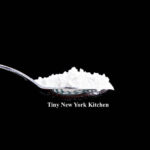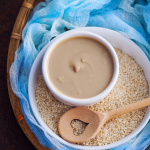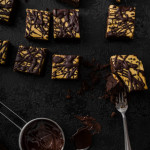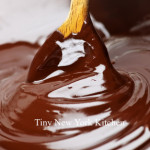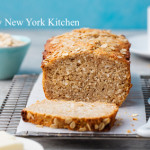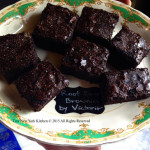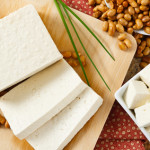Cooking With Cornstarch
More and more people are swapping starches for flour in their recipes. If this is something that you have thought about doing then read on to find out more about cornstarch and its uses.
Cornstarch is one of the most versatile starches that there is. Extracted from the starchy endosperm of corn, its white powdery substance is virtually flavorless. It’s a nice ingredient for thickening puddings, soups, pie fillings, and many baked goods recipes. When added to cake, cookie, and shortbread recipes, cornstarch helps create a crumbly and tender texture.
Commercially, cornstarch is often used as an anti-caking agent. When added to packaged goods like shredded cheese, cornstarch coats the cheese and helps to absorb moisture that would otherwise cause spoiling. The absorption process also helps prevent food from clumping over time. Additionally, it is used when making sugars, such as corn syrup.
When cooking with cornstarch, it is best to mix this ingredient into a recipe that is at room temperature. When cornstarch is added to too hot of a mixture, the heat can cause unwanted clumping. Before adding any starch to a recipe, it’s recommended first to make a slurry. To make a slurry, simply mix cornstarch with a cold liquid such as water. This mixture will create a paste-like substance, that you can then add to the desired recipe. Using this slurry method will ensure that the cornstarch is evenly distributed throughout the recipe and not broken down by the heat. It is not recommended to freeze sauce and soups that include cornstarch. Freeing cornstarch can cause the molecules in the starch to break down, and once thawed, the liquid will not hold the same texture as before.
For Thickening:
Cornstarch is often used as a thickening agent when added to soups, stews, and gravies. Denser than flour, less cornstarch is needed to thicken a liquid to the desired consistency.
When cornstarch is added to a recipe, the starch molecules work to absorb water and thicken the mixture. When heated, those molecules swell and consume even more of the liquid in the recipe. Upon thoroughly cooking, the starch in the mix will have expanded size to ten times its size. Once the mixture cools, these same molecules will set. The setting of these molecules can help further solidify the dough, which makes cornstarch a great thickening agent for gooey fillings like pies and pudding. However, this molecule expansion is limited. While a cornstarch enriched recipe can be brought close to boil, it should never be fully boiled. When cornstarch is exposed to too high of temperatures, the starch molecules will begin to deflate, and the mixture will return to its runny state.
For Baked Goods:
Cornstarch not only acts as a thickening agent, but it can also be used in baked goods like cookies, brownies, and cakes. If you’re looking for more structure in your favorite dessert recipe, then you may want to try using cornstarch. Combining cornstarch with other flours can help soften the rigid proteins of the flour, resulting in a light and chewy dessert. Similar to when adding cornstarch to a soup or pudding, if adding cornstarch to a dessert batter, it should first be turned into a slurry. This will ensure that all of the molecules remain intact and that the starch is evenly distributed. Upon adding cornstarch to your baked goods, evaluate it as you would a soup. Has your batter reached the desired consistency? If not, then a bit more cornstarch may be needed. Once your dough looks perfect, bake your dessert like usual. The result should be light, fluffy, and delicious desserts.
Anti-Caking Agent:
Have you ever wondered why your powder sugar ingredients include cornstarch? Cornstarch acts as an anti-caking agent. By keeping moisture and condensation from reaching whatever it is mixed with. It helps to prevent lumps in finely ground foods like sugar. Cornstarch isn’t just used to ward off moisture from sugar. The next time you’re in the grocery store take a look at how many products list cornstarch as an ingredient. From gravy granules to shredded cheese, you might be surprised by the wide variety of foods that cornstarch is added to.
Frying With Cornstarch:
Cornstarch can also be used as a coating for fried foods. While cornstarch shouldn’t be used as a substitute for flour in baked goods, you can very easily substitute it in for flours when coating fried chicken, fish, or other items you’re frying. Not only will cornstarch work in the same way that flours do, but it will hold up better against sauces and absorb less of the frying oil. Less oil means less fat in your meal.
When frying food with cornstarch, I recommend that you coat the items lightly. Applying a light even coat to your food will ensure that it results in a crispy texture. When too much cornstarch is added, the coating often turns out gummy rather than crunchy. For the perfect, gluten-free fried food, consider blending cornstarch with a gluten-free flour like almond flour. This will help create a more breaded result, similar to wheat flour.
©Tiny New York Kitchen © 2021 All Rights Reserved
Ways To Use Tahini
Tahini, a roasted sesame seed paste, is the key ingredient in hummus recipes, but you can also use tahini these ways:
Nut-Free Peanut Sauce
Combine with soy sauce, lime juice, brown sugar, and crushed red pepper. Check labels to be certain that your tahini is nut-free.
Veggie Burgers
Add a spoonful to help bind bean or lentil burger mixture together instead of using an egg.
Oatmeal
Drizzle over a bowl of oatmeal topped with sliced bananas, a dollop of yogurt, and maple syrup.
Dressing
Stir together with lemon juice, olive oil, and minced garlic as a dressing for salads or grain bowls.
Brownies
Swirl into a pan of brownie batter before baking to balance the sweetness of the chocolate.
©Tiny New York Kitchen © 2021 All Rights Reserved
Summer Baking
I know that summer baking seems counter intuitive, but for some reason I feel compelled to keep baking in the warmer months of the year. Keeping your home cool can be though enough without the oven adding to the heat. Plus, adding in heat-sensitive ingredients and humidity and you can have less than perfect baking results. Summer does bring wonderful seasonal ingredients like berries and stone fruits that should be missed.
Use your oven in the morning or evening. We all know that your oven can heat up your kitchen quickly. This is why I like to bake early in the morning or in the evening when the outside temperature is lower.
Choose recipes with shorter baking times. In keeping with minimizing the heat from your oven, look for baking recipes that don’t require lots of oven time. A simple cake or a pan of mini cupcakes will bake more quickly than a Bundt cake or even a pan of brownies. If you’re a cookie baker try baking a pan at a time to avoid having the oven on for all the time it takes to bake dozens of cookies. You can refrigerate the dough between batches or even freeze the dough to bake when your cookie cravings strike.
Refrigerate cookie dough and pie crusts. Speaking of cookie dough, keep in mind that a warmer kitchen will also make your cookie doughs warmer. If the butter in the dough begins to melt, you could end up with flat, tough cookies. You can try scooping and baking your cookies quickly, but if you refrigerate the dough before baking and between batches you will avoid these issues. This applies to pie crusts as well. It’s not unusual on a warm day to end up with a too warm, too soft pie crust once it’s rolled out, placed in the pan and the edges fluted. When this happens, just put the pie pan in your refrigerator for a bit to let it cool and rest.
Keep an eye on softening butter. With a warmer kitchen butter will soften faster. The warmer it is the faster butter will soften. If you’re using a recipe that contains softened butter, remember to check for softness sooner than normal to ensure that the butter doesn’t get too soft and affect the texture of your baked goods.
Humid days can definitely affect your baking. If you are baking something with a lot of liquid in it, then it may take longer to bake than usual. Keep an eye on whatever you’re baking and follow the recipe’s directions and your best judgement to check for doneness.
Fresh berries and stone fruits are one of summer’s gifts and it is nice to bake with them. There are so many easy ways to bake with summer fruit. A simple fruit crisp or cobbler is always a welcome treat on a summer day. They are also wonderful garnishes for many desserts like cheesecake and pound cake.
Frosting and heat generally don’t mix well. If you’ve made a cake or cupcakes that are frosted you may want to keep them in the refrigerator until it’s time to serve them. Bring them to room temperature before serving. Refrigerating these types of desserts isn’t a bad idea year-round, especially if the dessert won’t be eaten within a day or two.
No bake desserts may be the way to go. Skipping the oven time can still yield amazing desserts that are perfect for the season with their cool, creamy flavors, and textures. From ice cream to cheesecakes to pies and a whole lot more, you can find plenty of ways to satisfy your sweet cravings.
Support your local bakery. If you are lucky enough to have a great local bakery, take advantage of it. A simple pound cake can be turned into something special with just some fresh fruit and sweetened whipped cream. Brownies can be dressed up in a big way with a scoop of ice cream, a drizzle of caramel sauce, and a sprinkling of nuts. Your grocery store can help, too, with shortcut ingredients like puff pastry.
“Work With What You Got!”
©Tiny New York Kitchen © 2020 All Rights Reserved
Baking Brownies
Sometimes I Just Get In An Uncontrollable Baking Mood. Baking Brownies Is One Of My Favorite Things To Do.
Fall Baking
Even though summer is not technically over I’m in the fall baking mood. Yesterday was a rainy day here in New England. I made Gooey Rocky Road Brownies and I had to stop myself from eating the entire batch.
Cooking With Coffee
There’s nothing like the smell of freshly brewed morning coffee whether it’s perked, dripped or pressed, it’s the most favorite part of my day. Coffee is my morning ritual, but coffee is not just for mornings. If you have a bit of extra brewed coffee or grounds lying around then you can “perk” up the flavor of pretty much anything. The earthy flavor works in everything from meat marinades, sweet syrups, and many savory and sweet recipes using coffee as an ingredient, from tangy sauces for a tender filet mignon to a few teaspoons flavoring your favorite cakes or cookies. When added to a chocolate cake or a cookie, coffee brings out the flavor especially in chocolate. When the recipe calls for water just use what’s leftover in the pot. In many recipes you can just add a teaspoon of instant coffee or even espresso powder.
Add flavor fast to a roast by using that leftover coffee in your marinade, which also helps tenderize the meat. You can also use it to the braising liquid for beef short ribs. As the liquid cooks down, the coffee caramelized adds a delicious bittersweet dimension to the dish. I also like to stir a bit of coffee into barbecue sauce for grilled chicken or add some to homemade chili to round out the flavor.
Add coffee grounds to your spice shelf! The combination of ground coffee, kosher salt, and paprika will add flavor to your dishes. Use it to make a crusted pork or brisket dish. Rub the coffee ground spice combination to burgers before grilling them.
I like using instant espresso powder in my desserts. Unlike coffee grounds, espresso powder dissolves completely in hot water, eliminating grittiness that you may not want in most baked goods. Keep in mind that it packs a powerful punch, so a little goes a long way. Add a small amount to brownies or cakes. Freeze it with sugar for an easy granita or reduce it with sugar and cream to create a rich glaze.
“Work With What You Got!”
© Victoria Hart Glavin Tiny New York Kitchen © 2017 All Rights Reserved
Quick Breads
Quick Breads
For mouth-watering breads that don’t require a lot of time, turn to quick breads. By using baking powder, baking soda, steam, or air instead of yeast to leaven dough. An advantage of quick breads is their ability to be prepared quickly and reliably, without requiring time-consuming skilled labor and the climate control needed for traditional yeast breads. Quick breads include banana bread, beer bread, biscuits, cornbread, cookies, muffins, cakes, pancakes, brownies, scones, and soda bread.
Almost all quick breads have the same basic ingredients: Flour, leavening, eggs, fat (butter, margarine, shortening, or oil) and a liquid such as milk. Ingredients beyond these basics are added for variations of flavor and texture. The type of bread produced varies based predominantly on the method of mixing, the major flavoring, and the ratio of liquid in the batter. Some batters are thin enough to pour and others are thick enough to mold into lumps.
There are four main types of quick bread batter:
Pour Batters: Such as pancake batter, have a liquid to dry ration of about 1:1 and so pours in a steady stream – also called a “low-ratio” baked good.
Drop Batters: Such as cornbread and muffin batters, have a liquid to dry ratio of about 1:2.
Soft Doughs: Such as many chocolate chip cookie doughs, have a liquid to dry ratio of about 1:3. Soft doughs stick significantly to work surfaces.
Stiff Doughs: Such as pie crust and sugar cookie doughs, have a liquid to dry ratio of 1:8. Stiff doughs are easy to work in that they only minimally stick to work surfaces, including tools and hands – also called “high-ratio” baked goods.
Preparing a quick bread generally involves two mixing containers. On contains all dry ingredients (including chemical leavening agents or agent) and one contains all wet ingredients (possibly including liquid ingredients that are slightly acidic in order to initiate the leavening process). In some variations, the dry ingredients are in a bowl and the wet ingredients are heated sauces in a saucepan off-heat and cooled.
During the chemical leavening process, agents (one or more food-grade chemicals – usually a weak acid and a weak base) are added into the dough during mixing. These agents undergo a chemical reaction to produce carbon dioxide, which increases the baked good’s volume and produces a porous structure and lighter texture. Yeast breads often take hours to rise, and the resulting baked good’s texture can vary greatly based on external factors such as temperature and humidity. By contrast, breads made with chemical leavening agents are relatively uniform, reliable, and quick. Usually, the resulting baked good is softer and lighter than traditional yeast breads.
Chemical leavening agents include a weak base, such as baking soda (sodium bicarbonate) plus a weak acid, such as cream of tartar, lemon juice, or cultured buttermilk, to create an acid-base reaction that releases carbon dioxide. Quick bread leavened specifically with baking soda is often called “soda bread.” Baking powder contains both an acid and a base in dry powdered form, and simply needs a liquid medium in which to react. Other alternative leavening agents are egg whites mechanically beaten to form stiff peaks, as in the case of many waffle recipes, or steam, in the case of cream puffs.
There are three basic methods for making quick breads, which may combine the “rise” of the chemical leavener with advantageous “lift” from other ingredients.
The Stirring Method: Also known as the quick-bread method, blending method, or muffin method is used for pancakes, muffins, corn bread, dumplings, and fritters. This method calls for measurement of dry and wet ingredients separately, then quickly mixing the two. Often the wet ingredients include beaten eggs, which have trapped air that helps the product to rise. In these recipes, the fats are liquid, such as cooking oil. Using mixing is done using a tool with a wide head such as a spoon or spatula to prevent the dough from becoming over-beaten, which would break down the egg’s lift.
The Creaming Method: Frequently used for cake batters. The butter and sugar are “creamed” or beaten together until smooth and fluffy. Eggs and liquid flavorings are mixed in, and finally dry and liquid ingredients are added in. The creaming method combines rise gained from air bubbles in the creamed butter with the rise from the chemical leaveners. Gentle folding in of the final ingredients avoids destroying these air pockets.
The Shortening Method: Also known as the biscuit method, is used for biscuits and scones. This method cuts solid fat (whether lard, butter, or vegetable shortening) into flour and other dry ingredients using a food processor, pastry blender, or two hand-held forks. The layering from this process gives rise and adds flakiness as the fold of fat melts during baking. This technique is said to produce “shortened” cakes and breads, regardless of whether or not the chosen fat is vegetable shortening.
Quick bread originated in the United States at the end of the 18th century. Before the creation of quick bread, baked goods were leavened with either yeast or by mixing dough with eggs. The discovery of chemical leavening agents and their widespread military, commercial, and home utilization in the United States dates back to 1846 with the introduction of commercial baking soda in New York by Church and Dwight of “Arm & Hammer” fame. This development was extended in 1956 by the introduction of commercial baking powder in Massachusetts, although the best known form of baking powder is “Calumet”, which was first introduced in West Hammond and Hammond, Indiana (later Calumet City, Illinois) in 1889. Both forms of food-grade chemical leaveners are still being produced under their original names.
During the American Civil War (1861-1865) the demand for portable and quickly made food was high, while skilled labor for traditional bread making was scarce. This encouraged the adoption of bread, which was rapidly made and leavened with baking soda, instead of yeast. The shortage of chemical leaveners in the American South during the Civil War contributed to a food crisis.
As the Industrial Revolution accelerated, the marketing of mass-produced prepackaged foods was eased by the use of chemical leaveners, which could produce consistent products regardless of variations in source ingredients, time of year, geographical location, weather conditions, and many other factors that could cause problems with environmentally sensitive, temperamental yeast formulations. These factors were traded off against the loss of traditional yeast flavor, nutrition, and texture.
www.tinynewyorkkitchen.com
“Work With What You Got!”
© Victoria Hart Glavin Tiny New York Kitchen © 2016 All Rights Reserved
Blue Ribbon Root Beer Brownies
Last Sunday Wilton, Connecticut’s, Cannon Grange, had their annual fair. I love this little fair because it truly is something from out of the past. The fair is held inside the grange where people compete against one another for things like “best homegrown tomatoes” and “best homemade pickles.” Outside are various local venders as well as a children’s’ watermelon eating contest. On a whim I decided to enter my Root Beer Brownies and won first prize. Next year I may enter my rhubarb jam or my double decker carrot cake. These are some of the simple things in life that make me happy.
How To Eat More Protein On A Meat-Free Diet
How To Eat More Protein On A Meat-Free Diet
If you’re new to a meat-free diet or you struggle with ways to get the protein you need here are some important tips that may help you. It really isn’t as hard as you might think.
Snack on protein rich munchies and skip the carbs. Eat roasted chickpeas, edamame, roasted peanuts, or raw nuts. Keep away from heavily salted nuts.
If you’re looking for a frozen treat then purée coconut milk, almond butter, cashew butter, honey, and cocoa powder. Freeze in an ice cream maker for a protein rich frozen treat.
Make an easy cream sauce by whisking cashew butter with vegetable stock, garlic, and minced parsley. Toss with cooked pasta.
Crumble tempeh (fermented soybean protein) into pasta sauce or soups, or wherever you might use hamburger meat.
Purée cooked black beans and add to brownies. For blondies or light colored muffins or cakes, use cooked, puréed chickpeas.
Sprout sunflower seeds and add them to salads. Just soak raw seeds overnight in water to cover. Drain and let sprout for 24 to 48 hours.
Add ground flaxseeds to muffins, waffles, breads, or cookies for a protein boast and added omega 3 fats.
Make a protein packed pudding. Purée silken tofu with cocoa powder, honey, and vanilla extract.
Use hemp or rice protein powder instead of flour to make waffles, pancakes, and baked goods. Instead of eggs, use flax as a binder.
Lentils are awesome! Eat lentils more often. They are fast cooking and easy to use. Add to soups, toss in salads, and stir in cooked rice.
Spread sandwiches and wraps with hummus instead of mayonnaise. I do this all the time. Purée hummus with roasted red peppers or chipotle peppers for an added zing.
If you can tolerate gluten, seitan (wheat protein) is a great substitute for sliced deli meat. Use it in wraps or sandwiches for an easy lunch.
“Work With What You Got!”
© Victoria Hart Glavin Tiny New York Kitchen
Passover Menu Ideas
March 25 to April 2
There can be something wonderfully reassuring about sitting down to a dinner so traditional that you will know exactly what to expect. Each family has their own traditions and favorites. They’ve stood the test of time and families look forward to them year after year.
Seder Plate:
Hard Boiled Egg
Shank Bone
Horseradish
Haroset
Parsley Bouquet
Matzoh
Apple & Walnut Haroset
Persian Haroset
Gefilte Fish With Horseradish
Traditional Gefilte Fish With Carrots & Aspic Served With Matzoh
Traditional Chopped Liver
Pickled Herring In Onion & Sour Cream Sauce
Smoked Whitefish Salad
Herring Salad
Crudité of Fresh Raw Vegetables With Dip
Imported Cheese Board Garnished With Fresh Fruit
Chicken Soup With Matzoh Balls
Roasted Salmon
Traditional Brisket With Gravy
Filet of Beef
Roasted Whole Capon With Rosemary & Shallots
Roast Chicken
Free Range Turkey
Whole Boneless Fresh Turkey Breast
Rolled Spit Roasted Turkey Breast
Smoked Fish Platters With Olives, Capers & Lemons
Smoked Salmon Platter
Whole Boneless Large Whitefish
Matzoh Stuffing With Mushrooms & Caramelized Onions
Tzimmes of Sweet Potatoes, Carrots & Butternut Squash
Potato Pancakes With Applesauce
Potato Kugel
Spinach Kugel
Steamed Spring Vegetables With Dill
Herb Roasted Beets
Sautéed Root Vegetables (Turnips, Parsnips, Carrots, Haricots Vert & Wild Mushrooms)
Steamed Asparagus
Glazed Brussels Sprouts & Pearl Onions
Green Beans With Roasted Garlic
Lemon Meringue Cake
Chocolate Torte
Chocolate Almond Cake
Chocolate Glazed Orange Cake
Walnut Date Torte
Cheesecake
Raspberry Filled Yellow Cake
Orange & Lemon Sponge Cake
Sliced Fruit Platter
Fruit Salad
French Macaroons
Coconut Macaroons
Almond Macaroons
Meringue Clouds
Brownies
NOTE: For Baking Desserts Use Almond Flour, Kosher Potato Starch, Matzo Cake Meal or Matzo Meal As Substitutions. Check Recipes To Determine Which Are The Best Substitutions.

